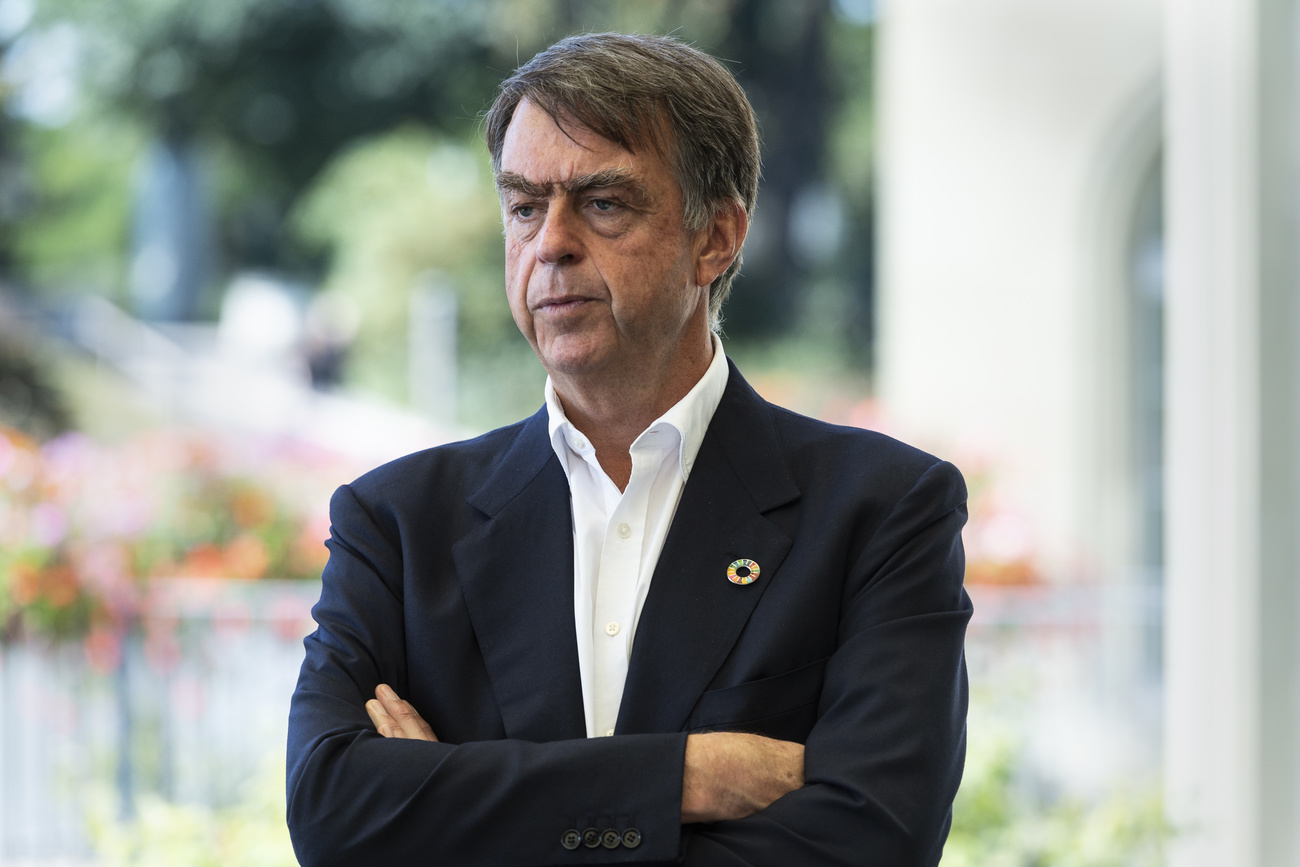Necessity really is the mother of invention

Swiss scientists have chalked up a long list of successful inventions in recent years from navigation technology in robots to a new pepper spray for self-defence. Vincent Landon spoke to the creators of some of the most innovative new devices.
How are great ideas born? What’s the impetus behind them? Gery Colombo, head of research at the paraplegic centre in Zurich, developed a system for training patients with spinal cord injuries on a treadmill. For him, the motivation was simple.
“In Zurich, we did manual assisted treadmill training for eight years. It was very hard work for the therapists and training was usually limited to a few minutes. After about four years of backache, you start thinking about better solutions.”
Before Colombo’s invention, intensive treadmill training required that two physiotherapists moved the legs of a patient on a treadmill. Now the work can done by a machine, and doctors at the Zurich centre have been free of backache ever since.
The centre now plans to sell the system to other rehabilitation centres.
Other inventors are quite frank about the financial incentives behind their product. One company, Piexon in Aarwangen, has just developed an improved pepper spray with a mechanism which means it can function upside down – unlike previous sprays – and also much more powerfully.
“The market for pepper sprays is huge,” says Jürg Thomann, the company’s marketing manager. “Several million pepper sprays are sold worldwide every year so we expect we can make a fortune.”
Some great inventions are spin-offs from other fields of research. Take the Biel school of engineering which won fame in the 90s for its solar car racing.
The school was approached by a German glider manufacturer who wanted to use the electric motor employed in its cars in his plane. Until then, gliders used a normal combustion engine for their initial climb.
The new engine has better safety features, works longer and has more power. The company will produce two examples of the new plane by the end of the year, increasing production to 40 a year by 2003.
Some great ideas take a long time to see the light of day. Roger Tognini of Icotec makes screws out of composite materials so they have the strength of steel or titanium but are much lighter. He says that despite the obvious benefits for aerospace and medical applications it was a long time before his invention was taken up.
“It happened 10 years ago when I was a student. It was largely by accident because the tooling I needed to make a screw just broke down and I had to find a new way to produce it.
“The screws just stayed at the university a couple of years before eventually being taken up by industry and a company.”
Persuading companies to take new inventions seriously is one problem, but equally difficult for inventors is the turning an idea into reality in the first place.
“It needs a lot of discipline, a lot of hard work,” says Andreas Hierlimann, a chemist from the Federal Institute of Technology in Zurich, who invented a smell-detecting chip or chemical sensor system. “Generally, most research consists of having the perseverance to follow up a goal you have in the beginning.”
So what are the major difficulties facing new inventors? For Raphael Fleischauer, the technical manager behind Piexon’s pepper spray, it was treading the fine line between effectiveness and safety.
“The main difficulty in the development of this device was not to make it too strong because if you fire a very fast, very strong liquid jet into the face of an aggressor, you could damage the eyes. It was necessary that we make a cartridge which is very effective but would cause no lasting damage.”
Another key element is teamwork, says Dirk Lange, who worked on the smell-sensitive microchip. “When you look at the chip, there are three sensors, as well as analogue circuits and digital circuits, and you have to put all these things together.
“For that you need a number of experts – a sensor specialist, a circuit designer, a chemist – and they all have to come together and try to learn to speak the same language.
“At the beginning when we proposed this, our professor didn’t really think we would finally end up with 20 people working on the project simultaneously.”
Faced with such daunting challenges, there would seem to be little incentive to becoming an inventor.
But Andrea Vezzini of the Biel School of Engineering says the attraction lies in doing something that has never been done before.
“When we were building the engine for the glider, it looked very easy to begin with: take the motor, put it on the plane and you’re away. But in fact there were lots of other problems we have to solve.
“For example, we have to sacrifice a little efficiency to reduce the weight, which is very important for a glider. To achieve this, we had to push technology to somewhere no one had ever been before. And that, I guess, is the inspiration for why I do these things.”
by Vincent Landon

In compliance with the JTI standards
More: SWI swissinfo.ch certified by the Journalism Trust Initiative









You can find an overview of ongoing debates with our journalists here . Please join us!
If you want to start a conversation about a topic raised in this article or want to report factual errors, email us at english@swissinfo.ch.